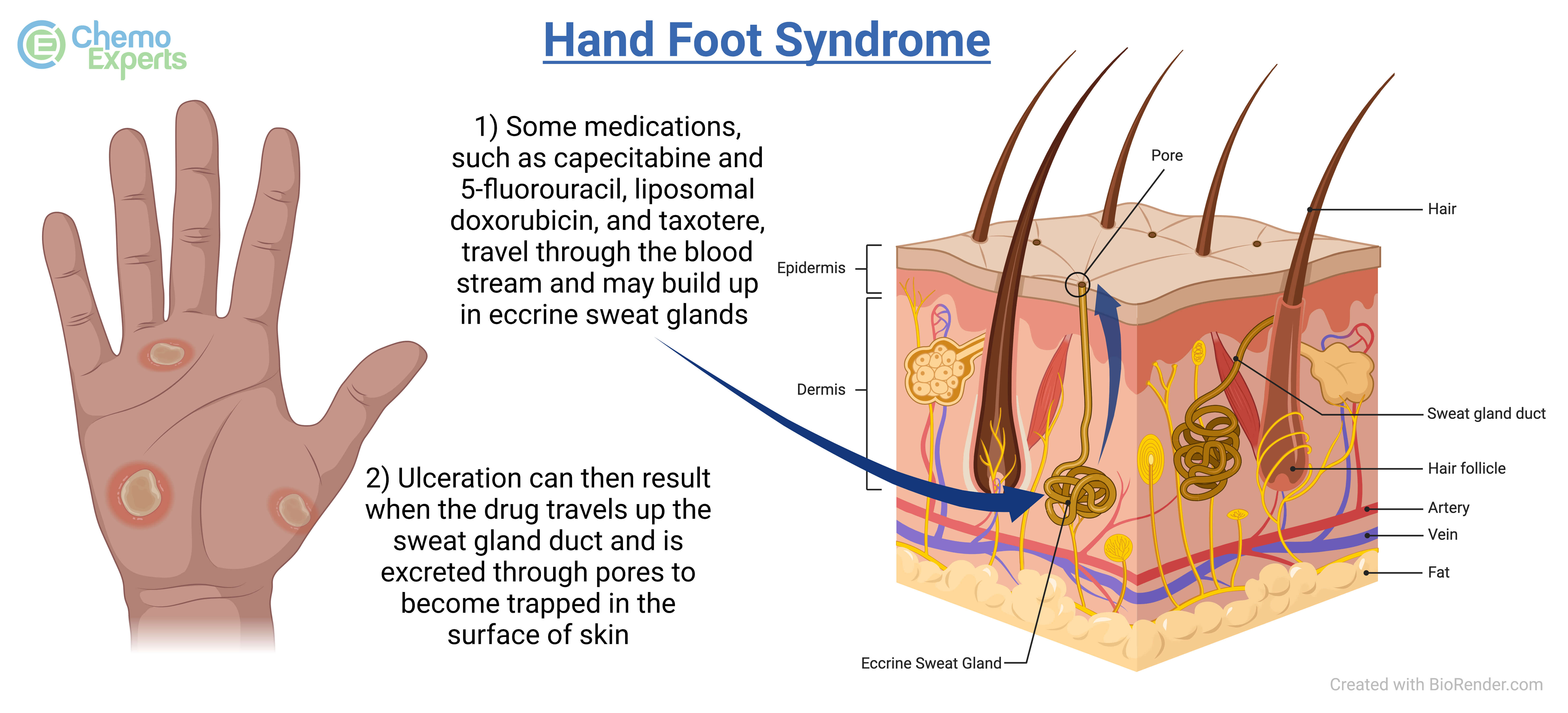Side Effect: Hand-Foot Syndrome
What is Hand-Foot Syndrome?
Hand-foot syndrome (HFS), also known as palmar-plantar erythrodysesthesia, is a form of skin toxicity that can occur due to chemotherapy. Although it’s not well understood, it is believed that HFS is due to certain chemotherapy medications that can accumulate in the skin or sweat glands of the hands and feet.
What does Hand-Foot Syndrome look like?
HFS is characterized by redness, swelling, and dry cracked skin on the palms of hands and/or the soles of feet. Some patients may also experience numbness, tingling, or burning pain. In severe cases, the skin may start to blister and form ulcers.
Hand-Foot Syndrome

Click to enlarge
Only a few chemotherapy agents are known to cause Hand Foot syndrome. Although not always, Hand Foot syndrome may be preventable by wearing loose fitting clothing, avoiding extreme heat or bathing in hot water, by using alcohol-free, urea based moisturizing creams, and by avoiding increased friction on hands and feet through activities such as racquet sports such as pickleball or tennis, golf, or other activites that increased sweating from the hands or feet.
Who gets Hand-Foot Syndrome?
Certain medications that are known to potentially cause HFS include 5-fluorouracil (5-FU), capecitabine (Xeloda®), liposomal doxorubicin (Doxil®), and docetaxel (Taxotere®).
How long does last?
Most patients who experience hand-foot syndrome typically see improvement in 1-2 weeks.
How to prevent Hand-Foot Syndrome
A few ways to help prevent HFS include:
1. Wear loose fitting clothing and shoes
2. Avoid extreme heat and bathing in hot water
3. Use alcohol-free, urea based moisturizing creams
4. Avoid increased friction on hands and feet such as vigorous exercise or gardening
How to treat Hand-Foot Syndrome
Most cases of HFS will require treatment interruption and potentially a decrease in the dose of the agent that is causing HFS or switching to a different therapy. Although there is no standard treatment for HFS, some options include topical corticosteroid creams, COX-2 inhibitors such as Celecoxib®, or petroleum-based ointments.
Created: September 27, 2023
Updated: October 21, 2023

